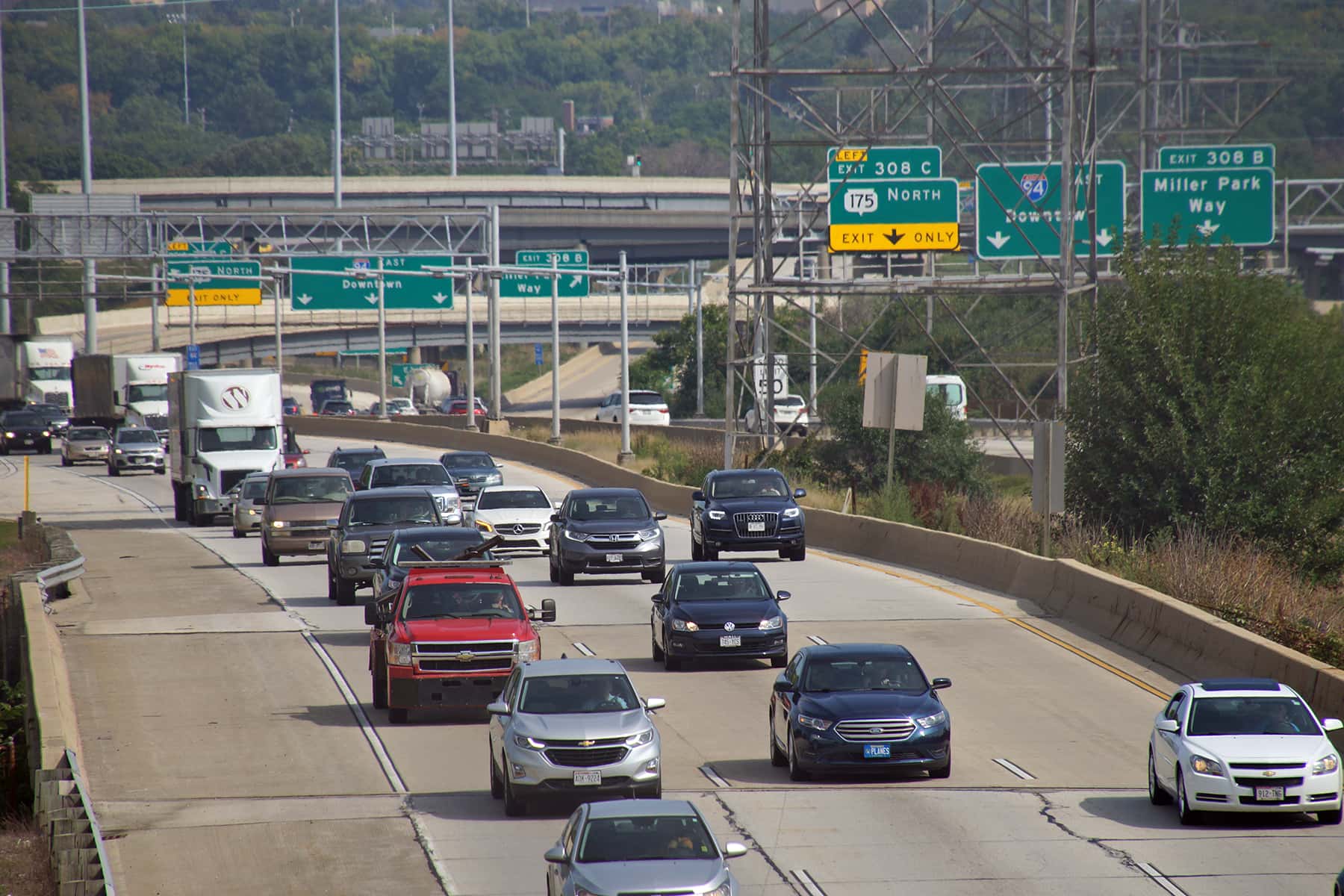
People don’t like to commute. It’s time consuming and can be frustrating. More importantly, commuting can be costly, both in terms of finances and well being. So we set out to calculate the true cost of the daily drive to work.
People don’t seem to change the way they get to work despite the negative aspects of commuting. The distribution of people using different modes of transportation, like driving alone, carpooling, or walking to work has remained steady since 2010. Each year, nearly 80% of Americans commute by driving to work alone.
The five best metros for commuting include New Orleans, Buffalo, Milwaukee, Oklahoma City, and Miami. The best cities were those with the lowest costs: Buffalo and Milwaukee residents were able to travel to work for less than $10 on average; while those in Seattle and Washington, D.C. spent nearly $25. The average commute time to work for Milwaukee was 23.7 minutes, with an annual maintenance cost of $450.47, an annual fuel cost of $544.93, and annual cost of commute that totals $6,035.92.
With an increasing population, there are more vehicles on the road, which increases traffic and the time people spend commuting to work. With the vast majority of American’s driving to work, the real cost of commuting is often overlooked and underestimated.
We were particularly interested in the personal costs related to the time and distance people commute, so we focused on the 80% of people who drive alone to work to best estimate the cost of commuting. We calculated the cost of commuting as the sum of the costs associated with fuel, vehicle maintenance, and time as the cost of opportunity.
The opportunity cost of commuting is roughly $6,449 for the average American when you factor in fuel, maintenance, and time. The average American spends $1,249, or 2% of their income, on fuel and maintenance to commute to and from work each year. Over the course of a year, the average commuter spends over 200 hours getting to and from work, and the opportunity cost of that lost time is roughly $5,200. Commuting costs Americans over $16 billion annually in time, fuel, and maintenance.
Americans spend 489 million hours driving 14.5 billion miles to and from work each year.
The cost of commuting disproportionately affects low-income workers. People with lower incomes drive farther to work and spend more out of pocket. People with long commutes are more stressed, more depressed, and less productive than those who don’t commute as long. An analyses of U.S. Department of Transportation and County Health Rankings revealed that longer and farther commutes were linked to worse health outcomes. Unscheduled absences from work can be related to the effects of commuting, and cost employers nearly $2,700 per worker each year.
The True Cost of Commuting
Americans spend $16 billion annually commuting to and from work when we consider the costs of fuel, maintenance, and people’s time. Americans spend an average of 46 minutes commuting to and from work each day and nearly a third spend over an hour.
Time Alone Costs Americans $12.9 Billion Per Year
That translates to over 200 hours spent commuting annually, assuming an average of 260 working days per year. Those hours cause commuters to lose out on other opportunities, like earning money or doing more enjoyable things: an economic concept known as opportunity cost. To calculate the true cost of commuting, we defined the opportunity cost as the wages the commuter could have made during their commute at their average hourly wage. In 200 hours of work, the typical American worker could earn an additional $5,200 a year.
Of course, people wouldn’t likely swap commute time for more time at work unless they were paid hourly; instead, those 200 hours could be used for hobbies, spending time with family or friends, or leisure activities.
In a year, someone could get an additional 30 minutes of sleep every day, become best friends with an acquaintance, learn 10 new skills, watch all 23 Marvel Cinematic Universe films plus 100 more 90-minute movies, or fly to the moon and back 23 times if they had those additional 200 hours.
Maintenance and Gas Cost Americans $3.1 Billion Per Year
The cost of commuting is compounded by added wear and tear, as well as fuel costs. The national average for gas was about $2.60 per gallon, and the typical cost of vehicle maintenance is 8.94 cents per mile. Considering driving to and from work accounts for a quarter of a vehicle’s miles, commuting contributes a great deal to vehicle costs over time.
On average, commuters travel nearly 23 miles each day getting to and from work, which costs about $2.00 in maintenance and $1.39 on gas. That calculates to 5,907 miles and $1,249 in maintenance and gasoline costs just to cover commuting.
Longer distances to work are associated with lower incomes, so people who are driving the farthest are spending more out of their pocket, as opposed to the potential for earning additional wages, and making less money. As a result, people with farther commutes spend a larger proportion of their income on fuel and maintenance costs than those with shorter commutes.
On top of maintenance and fuel costs, the distance you drive to work can affect your vehicle insurance rates. State Farm reported that “people who use their car for business and long-distance commuting normally pay more than those who drive less.”
Those increases in premiums are typically related to people’s increased likelihood of a collision, which would increase the cost burden even more; but can also be directly due to the vehicle’s use. Pleasure vehicles, for instance, cost less to insure than primary commuting vehicles under most insurance company plans. We didn’t include the potential for accidents or insurance rate differences in our metrics because they’re too variable and dependent on other factors, but we estimate that these expenses would be more burdensome to people who commute farther and for more time.
Long Commute Costs Aren’t Just Monetary
Commutes don’t just cost people money, they also negatively impact mental and physical health. People with longer commutes are less healthy, experience more stress and depression, take more days off work, and are less productive than those who have shorter commutes.
Long commutes contribute to increased stress because of the unpredictability of traffic and driving conditions, which bleeds into people’s overall satisfaction with their jobs and leisure activities. A 20-minute increase in commute time, for instance, has the same impact on people’s job satisfaction as a 19% pay cut.
Data from the County Health Rankings and Roadmaps suggests that over 16% of Americans are considered to be in poor or fair health; we were interested in whether health was related to commutes, so we used regression analyses to assess potential relationships between the percentage of the population in poor or fair health and commute measures.
What the Analysis of Data Shows, and It Is Not Good
Longer and farther commutes were related to worse health: Increasing the time someone spent commuting increased the proportion of the population in poor or fair health by 0.7 percentage points. And an additional 1 mile in commute distance was related to a larger proportion of the population in poor or fair health.
Those findings are supported by past research that suggests there are negative effects associated with long commutes: People who have longer commutes are 33% more likely to be depressed, 46% more likely to get less than 7 hours of sleep per night, and 21% more likely to be obese than people who commute less than 30 minutes to work (one-way), all of which can contribute to poor health. Those health costs might play a role in why commuters also tend to miss more work than those who live closer; adding to the potential for unforeseen consequences of commuting.
Commuting doesn’t only impact employees’ quality of life, it also has repercussions for other teammates and the employer. Commute time, satisfaction in the job, and happiness in the workplace directly contributes to people’s productivity at work. People whose commutes are over an hour are affected the most, losing approximately 7 days of productive work each year — by missing work and being less productive while at work — compared to their counterparts who commute less than 30 minutes each way.
And considering commute time is related to productivity and the likelihood that someone will miss work, people with longer commutes might be a burden to their employers and, therefore, might be at risk of losing their job. For instance, unscheduled absences cost companies about $2,660 per worker each year, and “fatigued workers cost employers $156.5 billion annually in health-related lost productive time, almost 4x more than their non-fatigued counterparts.”













